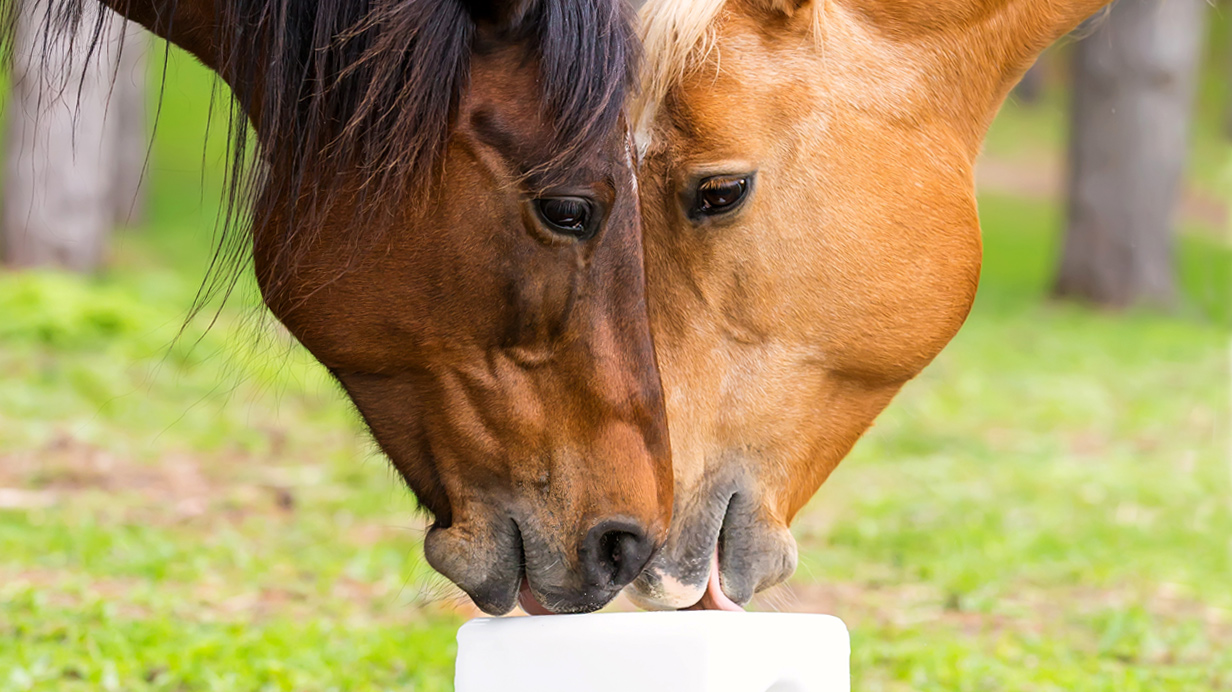Which salt lick is right for your horse?
Horses need to consume salt every day. But how much, and from what source? Sollio Agriculture provides an overview of the benefits of the different salt licks on the market.
First of all, it’s important to distinguish between “salt” and “sodium.” What we think of as “salt” is actually sodium chloride (NaCl), which is a source of both sodium (Na) and chlorine (Cl).
Needs
The best way to balance your horse rations is to know how much salt your horse needs. This varies based on many factors, such as physiological stage and activity level. Horse nutritional needs for sodium are set by the National Research Council. For example, a horse at rest needs about 25 g of salt per day, whereas a horse in training can require up to 100 g per day. Lactation is another factor that can increase a horse’s salt intake needs.
Sources of salt
As a general rule, a well-balanced ration will give your horses all the salt they need. Since forage typically contains very little salt, most of their needs are met by mineral supplements rather than by feed.
Salt licks, complete supplements and EquiBloc
There are several different types of salt licks. White, blue, red and brown are the most well known types. While all these salt licks are mostly made of salt (NaCl), there are slight differences between them in terms of composition:
Blue: Contains small amounts of iodine and cobalt
Red: Contains small amounts of iodine
Brown: Contains sulphur and some traces of minerals
White: Contains only sodium and chlorine
If your horse’s ration is well balanced with concentrates and a complete supplement, a white salt lick may be all you need. This will give your horse a bit of extra salt when it needs it and stimulate water intake.
Generally, complete vitamin and mineral supplements and the EquiBloc are preferable over pure salt blocks, as they meet your horses needs not only for salt but also for all the essential micronutrients that keep them healthy.
EquiBloc is an ideal choice if you want to give your horse a complete source of vitamins and minerals to balance a ration with few to no concentrates.
We recommend placing salt licks right next to drinking troughs to make it easier for horses to consume them. Horses have smooth tongues, and it can be difficult for them to get enough when the salt lick is dry. Providing free-access granulated salt is another good way to make sure they get enough.
Keep your horses healthy by making sure they get the right amounts of minerals and sodium chloride.


